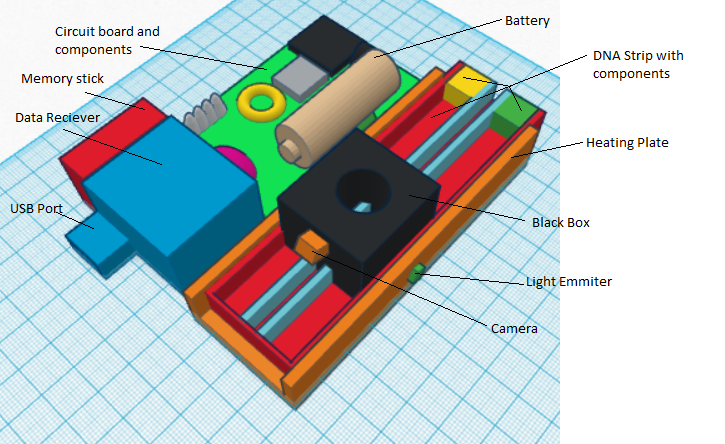BME100 f2015:Group3 8amL6
| Home People Lab Write-Up 1 | Lab Write-Up 2 | Lab Write-Up 3 Lab Write-Up 4 | Lab Write-Up 5 | Lab Write-Up 6 Course Logistics For Instructors Photos Wiki Editing Help | |||||||
|
OUR COMPANY
Our Company: Simple Tech LAB 6 WRITE-UPBayesian StatisticsOverview of the Original Diagnosis System
For calculation 2, the probability that a patient will get a negative final test conclusion for albinism, given a negative PCR reaction is much closer to 1.00. This indicates that the PCR test has a higher reliability rate when detecting the absence of albinism than even the positive PCR test. Therefore, given a positive PCR result and a final positive test conclusion, and a negative final test conclusion, the PCR test is showing a high reliability rate of success for either positive or negative results. For calculation 3, the probability that a patient will develop albinism given a positive final test conclusion is much less than one, indicating that there is a disparity between the PCR resullts and a diagnosis of albinism. For calculation 4, the probability that a patient will not develop albinism given a negative final test conclusion indicates a mid-range value of over fifty percent. Again, the negative PCR results and negative diagnosis results are much closer, but still indicates that a diagnosis may require more investigation to determine if albinism is present. The overall results of both tests when compared, indicates that the diagnosis of albinism cannot be determined only from the PCR. Determining the outcome of albinism through PCR results cannot be relied upon as the only way of diagnosing albinism. Other tests should be done for a comprehensive and inclusive outcome of negative or a positive diagnosis. One error that could have occurred is the amount of light within the box when taking the picture of the drop, causing an error in the illumination of the drop. Another error that could have occurred is the angle at which the picture was taken, causing the amount of SYBR Green1 to be false in ImageJ. The cellphone that is used with the fluorimeter process is not standardized, so errors can occur due to the operating ranges of different manufacturers for the standard controls of the camera. One of the other errors that could have occurred in the very beginning was with the labeling of the test tubes with patient's samples which could have lead to a false result at the end. Intro to Computer-Aided DesignTinkerCAD Our Design Our design:
Feature 1: ConsumablesConsumables that will be included in out packing plan include:
The test strips that are included will have the necessary mixes on the strip prior to packaging and distribution to make it more simpler for users. Each package will contain 100 disposable strips that are able to be purchased at a later time if needed. SYBR green solution comes in a small cell that is put on the black box to be added to the DNA sample after the PCR reaction. This cell is refillable and disposable. Feature 2: Hardware - PCR Machine & FluorimeterOur device is portable and small in size. The device comes with up to hundred test strips, these test strips already have PCR mix, DNA primer mix, buffer in it and when the patient's DNA sample is added to it then this strip is placed in the main device. The other components of the device include a metal slot where the test strip is put it, this metal slot is connected to a circuitry and battery that helps with the heating and cooling of this strip to carry out PCR reaction. A black box that is placed on top of this metal slot with the test strip works as a fluorimeter, this black box has the blue LED light that passes through the sample of DNA after the PCR reaction has been completed and SYBR green is added to that DNA sample, this SYBR green solution is added to the sample from a cell that is refillable and is on top of the black box. The camera placed at the other end captures the shots of the sample to be further analyzed and finalized for the results. The image is provided in the design section with labels on the components. Our device is mainly designed to detect particular SNP in the gene that is associated with albinism. The DNA primer mix present in the strips have particular forward and reverse primers associated with this disease.
| |||||||








